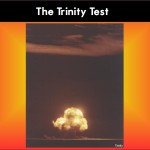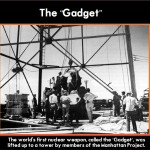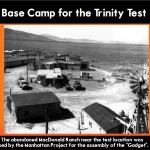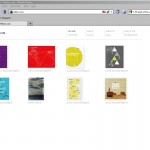July 16, 1945 marked the day the United States detonated the world’s first nuclear weapon in the Trinity Test. In August 1945, the United States dropped two more nuclear weapons on Japan, ending World War II. The possession and the use of nuclear weapons propelled the U.S. to become a world superpower. But as it entered the Cold War with the Soviet Union, the U.S. needed to protect its people and allies against the spread of communism and nuclear weapons were a strategy to help protect U.S. interests. In 1946, the U.S. government embarked on a program to test nuclear weapons to understand their effects on structures, animals, the environment, and to discover its potential. Many U.S. nuclear tests were conducted in what is today the Republic of the Marshall Islands. In conducting these test, the U.S. government intended to better understand the capabilities of nuclear weapons in order protect themselves against the Soviet Union and maintain world peace. But the U.S. Nuclear Test Program actually caused more harm than good, especially to the people of the Marshall Islands.
President Harry S. Truman made two statements about the use of nuclear weapons during World War II. The first statement (called the August Statement from here on) was made on Aug. 6, 1945, the same day the nuclear bomb Little Boy was dropped on Hiroshima. Truman talked about the amount of man-power and resources used to develop the bomb and that the United States had the power to influence and maintain world peace. (1) The second statement (called the October Statement from this point forward) was made on Oct. 3, 1945, two months after the nuclear bombings on Hiroshima and Nagasaki. In this statement, Truman made a proposal to Congress to develop a commission to ensure the proper control of nuclear weapons at home and abroad, and to ensure their future use for peaceful purposes. (2) Using Wordle, a web application that creates word clouds to emphasize the words most frequently used in a text, I found that the most frequently used words in Truman’s statements reflected what was to become of the U.S. Nuclear Test Program. In the October Statement, the words that were used frequently were: Development, Research, Use, Control and Discovery. [Fig. 1] The October Statement reflected what the U.S. government wanted to ultimately do with Nuclear Test Program. These words expressed their desire to develop nuclear weapons in order to study their effects and to make sure its production and use was under strict control of a responsible authority. In the August Statement, the words that were used most frequently were: Production, Destruction, Power, and History, but they reflected what actually happened during Nuclear Test Program. [Fig. 2] Though the U.S. government now had the power to destroy it enemies with just one bomb, the Test Program brought harm to the lives of the many innocent people of the Marshall Islands. The Nuclear Test Program also enabled the U.S. government to produce the most powerful nuclear test made in history, but this U.S. success also created a different history by those who were harmfully affected by it.
The U.S. Nuclear Test Program ran from 1946-1992, totaling to 1054 atmospheric and underground nuclear tests. [Fig. 3] 316 atmospheric test were completed from 1946-1963 (from 1963-1992, all nuclear tests conducted by the U.S. were done underground in accordance to the Atmospheric Test Ban Treaty signed with the USSR on Aug 5, 1963). The atmospheric nuclear tests were conducted in Nevada and the Pacific Proving Grounds (PPG), which is today part of the Republic of the Marshall Islands, from 1946-1958. (5) The PPG consisted of two atolls from the Marshall Islands: Enewetok Atoll and Bikini Atoll. [Fig. 4] The U.S. government chose these atolls as a location for the Program because of their isolation from big populations and from “shipping lanes, airways, and fishing grounds.” The Atolls were also chosen for their close distance to Kwajalein Atoll, which was a major U.S. airbase at the time. (4) Though the U.S. government found these atolls suitable for accomplishing their test program, its inhabitants were moved from their homes and taken atolls unsuitable to their way of life. The inhabitants of Enewetok Atoll were moved to Ujelang, a small atoll located south of Enewetok Atoll. The Enewetok people had to heavily rely on supply ships for food and other supplies, but the ships would come infrequently. An Enewetakian was quoted saying “Without canoes [and other materials] we cannot get to the other islands in the lagoon to harvest coconuts. Without the fishing equipment we cannot catch fish to get enough to eat.” The inhabitants of Bikini were moved to Rongerik Atoll, another small, uninhabited atoll located east of Bikini. Though a Navy official was quoted saying that Rongerik was more beautiful, richer, and larger than Bikini and that the coconuts were “three or four times as large as those on Bikini”, the exact opposite was true. The land of Rongerik was not fertile; it had fewer islands for food gathering and many of the lagoon fish were poisonous. (Dibblin, 22-23)
View Bikini Atoll in Operation Castle, 1954 in a larger map
Out of the 67 tests conduct at the PPG, 1/3 of the tests were conducted on Bikini. (5,6) Bikini Atoll was the location of the first test series of the U.S. Nuclear Test Program, Operation Crossroads, where the nuclear bombs Able and Baker were detonated in 1946. (5) Bikini was also the location of some of the most powerful nuclear testing done by the United States. [Fig. 5] Operation Castle, a high-yield nuclear test series, was conducted in 1954 with Castle Bravo being the most powerful nuclear test conducted by the United States. Castle Bravo was a 15-megaton (15000 kiloton) nuclear test that was conducted near Namu Island in Bikini Atoll on March 1, 1954. The detonation was so powerful that it created a crater 6510 ft in diameter and 250 ft deep. (3) Within minutes, the detonation produced a mushroom cloud that rose over 100, 000 feet and promoted the spread of radioactive fallout across the Marshall Islands, and eventually, around the world. (Barker, 41) The atolls that were most effected by the fallout were Rongelap, Rongerik, and Utrik Atolls. (Barker, 42) [Fig. 6] People who were exposed to the radioactive fallout experienced itchy, burning skin, weakness, and hair loss. People also felt nauseated after eating food that was exposed to the fallout. (Dibblin, 25-27) The Castle Bravo test became the worst fallout disaster in U.S. history because the test conductors did not heed to the sudden change in weather patterns that would spread fallout to inhabited atolls. (Barker, 40) The inhabitants of these atolls were evacuated two days after the detonation. Due to the late evacuation, many people suffered through various health complications from radiation exposure, such as leukemia, tumors, and cancers. (Barker, 182-183)
Because of the U.S. government’s future ambitions for nuclear weapons in 1945, its choice in testing location, and its slow response to the Castle Bravo fallout over the Marshall Islands, the U.S. Nuclear Test Program caused more harm than good to the people of the Marshall Islands. The U.S government’s quest to discover the potential of nuclear weapons disregarded the health and well-being of the people who gave their land to the U.S. for testing purposes.
————-
Security and Preservation
To secure my project, I would keep it on secure database that would be protected with multiple passwords. The passwords would be long, using a combination of upper and lowercase letters, symbols, and numbers. I would make the database’s software was up-to-date and that it contained the latest software to detect viruses and malware. I would also secure my project by saving it on multiple databases in different locations, so that if one database is down or is caught with a virus, my project would be safe and intact on the other databases. To preserve my project for the next generation of historians, I would not only keep my project on multiple database, but also save my project on multiple storage mediums, such as flash drives, CD-ROMs, and DVD-ROMs. Having multiple copies of my project will ensure that it will be more likely to be found. Saving on multiple medium also decreases my chances of losing my project if one of the mediums becomes obsolete. Making sure that I am aware of the most latest storage mediums and transferring my project to new ones will ensure its preservation for years to come.
————-
References
(1) Statement by the President, August 6, 1945- Trinity Test Website
(2) Message to Congress on the Atomic Bomb- AtomicArchive.com
Barker, Holly. Bravo for the Marshallese: Regaining Control in a Post-Nuclear, Post-Colonial World. 2nd ed. Wadsworth Cengage Learning, 2013.
Dibblin, Jane. Day of To Suns: US Nuclear Testing and The Pacific Islanders. New York, NY: New Amsterdam Books, 1990.
AtomicCentral. Castle Bravo. Online Video. 1 min 20 secs. 7 Nov 2011.









